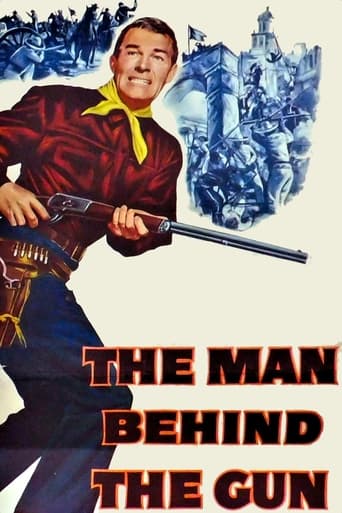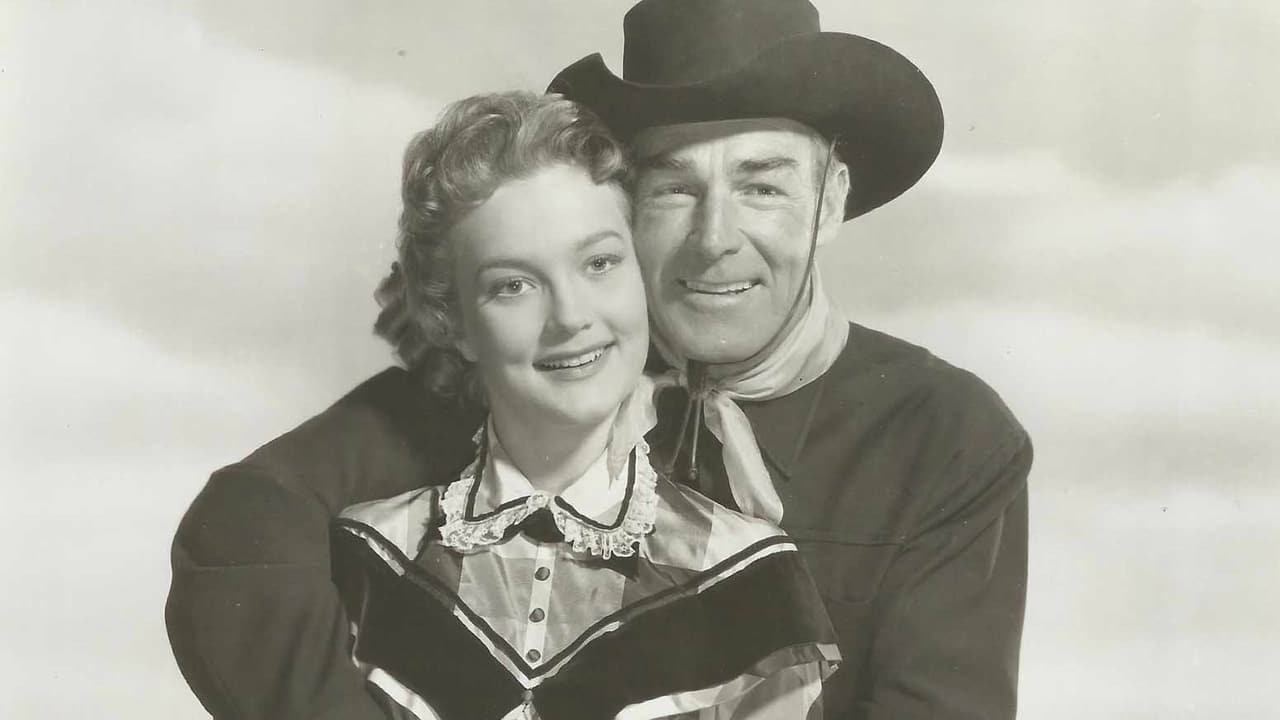Brian Camp
THE MAN BEHIND THE GUN (listed as 1952 in Leonard Maltin's Movie Guide) is a Warner Bros. western starring Randolph Scott and set in Los Angeles, California in the early 1850s. The script is okay, the pace is fast and it has a large, colorful cast. There are a number of interesting elements in it that are worth noting. The Southern California setting enables the script to name-check landmarks in the area: San Pedro, Santa Monica and the LaBrea Tar Pits—which two characters visit at one point. (No sightings of woolly mammoths, though.) They even mention San Luis Obispo, which is further up the coast. The plot involves manipulation of the water supply to L.A. with a corrupt politician trying to take control of it. As such, it looks forward to Roman Polanski's CHINATOWN (1974), 22 years later. There's even a direct casting connection. The actor who plays a California senator here, Roy Roberts, plays L.A.'s mayor in CHINATOWN.There are two significant Latino characters. One is female nightclub owner Chona Degnon, played by singer Lina Romay. She's the film's resident femme fatale and she tries to recruit Scott to help out with her gun-running sideline. She sings a couple of numbers, too. Some of you may remember her from her delightful live-action cameo in Tex Avery's cartoon, "Señor Droopy" (1950). The other Latino character is famed California bandit and folk hero Joaquin Murietta, well played by Robert Cabal, an actor I'm otherwise unfamiliar with. Other movies have been made about Murietta, including the TV movie, "Desperate Mission" (1971), starring Ricardo Montalban. Murietta is seen here on the cusp of his outlaw career and he becomes an ally of the hero. He's quite handy with both guns and knives and kills seven opponents, often quite casually.The cast includes Patrice Wymore (looking quite beautiful) as the fiancée of a military officer (Philip Carey) assigned to work with Scott. She soon finds herself falling for Scott, an undercover officer sent by Washington to put down a planned secessionist revolt. Wymore and Romay have a pretty convincing catfight at one point. Dick Wesson and Alan Hale Jr. (taking up where his dad, a longtime Warners contract player, left off) play ex-soldiers who'd served with Scott in the Mexican War and who act as his reluctant sidekicks here. They provide much of the (forced) comic relief. Dependable heavy Morris Ankrum has too small a part as a die-hard secessionist. Other dependable heavies in the cast include Douglas Fowley and Anthony Caruso.It's all mostly shot on studio sets, with location work saved for the action finale—a spectacular raid on the water pirates' camp. In a few sequences, the film uses stock footage culled from an earlier Warner Technicolor western. IMDb says it was SAN ANTONIO (1945). I'm more inclined to say it was DODGE CITY (1939)—and it's quite possible that the footage used in SAN ANTONIO was indeed taken from DODGE CITY as well. If anyone wants to watch all three of these films back-to-back just to get this straight, be my guest.This isn't the best Randolph Scott western I've ever seen, but it's certainly above average for him.
Tim Kidner
Seemingly, for a good part studio-bound, this bright little western is OK, as they go. It has good colour, a couple of breezy leads, some obviously staged fights and a story that seemed as vague as everybody in the film was about Randolph Scott's identity.How anybody could quite think that a tall, lean, cowboy-looking cowboy with a ten gallon hat to boot, would ever pass off as a 'schoolteacher', I don't know! In all westerns I've ever seen, schoolteachers have been pretty, demure little damsels that are just arriving by stagecoach or have been in post for years and inevitably marries the sheriff. That's a given...
justincward
The explosion of TV channels must be eternally grateful to the Randolph Scott Western production line, because any any moment there must be one of what seems like a hundred Randolph Scott movies playing on at least one no-budget station."Man Behind The Gun" is a typical early 1950's period melodrama with pre-WWII production values that relies on a historically-topical murder mystery plot peppered with action scenes to disguise the script's complete absence of character development, and thus lack of suspense. In years to come the role of these films would be taken over by TV shows like 'Gunsmoke', 'Bonanza', etc - and these actually did the job better. Randolph Scott, looking particularly grizzled in this, is the good guy, struggling against the bad guys against whom he will eventually prevail. There's no more interest in what he goes through emotionally than in what his horse is feeling, unless you count wondering whether he'll sort out the initial misunderstanding with the female lead by the end. The music is a stronger indication of the emotional state of the 'characters' than the acting is. But it's fine if that floats your boat; and I wouldn't berate you for enjoying 'Diagnosis, Murder', either.Workmanlike, pedestrian, and ageing rapidly. 3 stars for being competently put together; 0 for artistic endeavour.
Mozjoukine
All the things that made the Scott movies the most agreeable matine fare are present - an opening shoot out in foggy San Francisco streets, a stage hold up, historical plotting about stealing the L.A. water supply (well before CHINATOWN), false identity, opening an empty grave and hard riding and shoot outs in the great out of doors. On top of that it's delivered in Technicolor by some of Warners' most assured technicians, complete with stock shots from the Flynn movies and snatches of earlier Warner scores.The reason it's so mechanical must be the routine direction of Felix Feist who fades away as Scott takes on sure hands Andre de Toth and Budd Boetticher as directors. The scene with Lina Ronay against the studio sky is particularly lack lustre. Randy grins his way through events and is doubled in the final river punch out while villain Roy Roberts does his own stunts - like I mean - really!



 AD
AD



